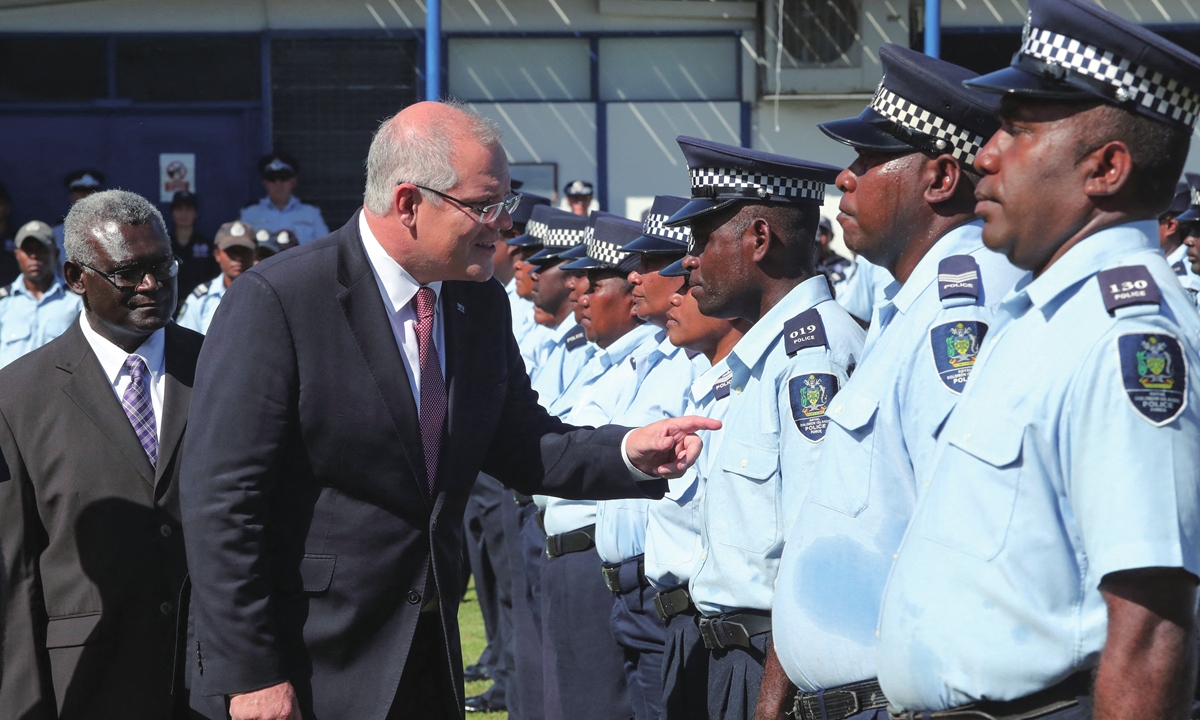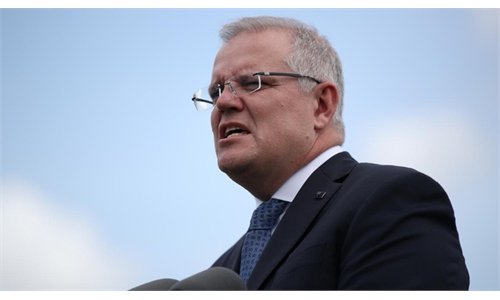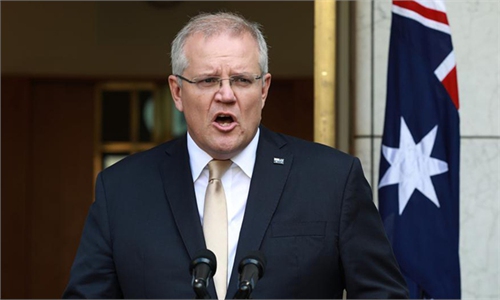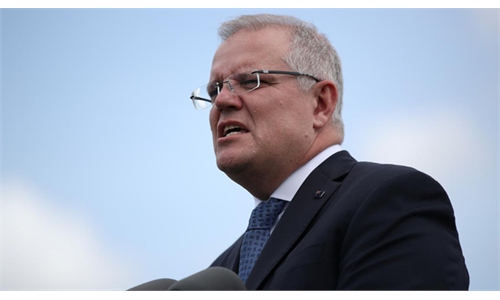Australian PM touts fiscal discipline to woo voters

Australia's Prime Minister Scott Morrison and his Solomons Islands counterpart Manasseh Sogavare inspect the guard of honor at the Royal Solomons Islands Police Academy in Honiara on June 3, 2019. Photo: AFP
Australia's ruling coalition on Tuesday pledged to fund A$2.3 billion ($1.6 billion) worth of its election promises by curbing public sector spending over the next four years, which it said would also further reduce the budget deficit.
With the national election just four days away on Saturday, Prime Minister Scott Morrison said government departments will be tasked to find ways to lower administrative costs without affecting essential services.
"This is a sensible, practical measure ... that's how you manage your budget, you live within your means," Morrison said.
Polls have showed the Morrison-led Liberal-National coalition trailing the main opposition Labor Party, while bookmakers announced odds had widened of center-left Labor returning to power for the first time since 2013.
Asked by reporters whether the polls kept him up at night, Morrison replied: "No." Trailing in polls is not new for Morrison, who carved out a narrow path to victory in 2019 defying poll predictions.
Morrison severely criticized Labor for not yet announcing plans to fund their campaign promises.
"How can you trust an opposition that says they want to take the reins of the Australian economy when they haven't been prepared to share with you what their policies cost?" he said.
Labor said it was planning to release their projections on Thursday.
Australia's economy has recovered faster than anyone expected, with unemployment hitting 13-year lows of 4 percent earlier in 2022 and is projected to soon reach levels last seen in the 1970s at 3.75 percent.
Reuters



